Advancing Black history education in the UK
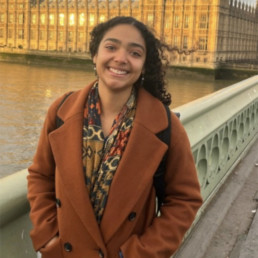
Written by Katie D'Souza
Katie D'Souza is a recent MA Education graduate, whose dissertation titled "Understanding the impact of 'our island story': exploring feelings of identity and belonging for Black British students" is currently under review for publication in the Curriculum Journal. Katie has since worked for a small business called The Educate Group, supports university staff to diversify their curricula and lead more inclusively, and now works at the Office of the Children's Commissioner, helping to ensure that the government listens to the voices of the children and young people living in this country.
Did you know that you can ask your MP to host a roundtable for you in parliament? The Black Curriculum (TBC) founder, Lavinya Stennett, certainly knew this, and last week took the opportunity to bring together key players in the Black history sphere for a critical discussion of Black history education in the UK, hosted by Bell Ribeiro-Addy MP.
TBC’s mission is to work with key stakeholders to embed Black history into the national curriculum. This roundtable sought to find practical and productive actions for ways to achieve this, and further cemented the determination for Black history to be meaningfully incorporated into the national curriculum, all year round.
With contributions from Professor Deirdre Osborne, expert in feminism, race and poetics, Michelle Codrington Rogers, citizenship teacher and NASUWT President, and award-winning history teacher and author Shalina Patel, amongst others, participants left this roundtable energised to arm the next generation of students (and ultimately leaders) with the comprehensive knowledge of history they need to navigate our increasingly globalised world.
A survey conducted by Bloomsbury in 2023 found that more than half (53%) of those surveyed could not name a Black British historical figure, and that only 7% could name more than four. The same survey suggests that less than 1 in 10 Brits believe that Black people have resided in England for more than 1000 years, assumptions erring towards 200 years, when in fact the answer in closer to 2000. Is this really the state of our history education system at the moment?
More can, and should, be done. Teaching Black history does not just build essential knowledge about structural and institutional racism, and Black brilliance, joy, and success. It also helps to create a sense of belonging for students with diverse heritage in UK classrooms, which may even serve to improve attainment and academic progress.
However, as it stands, the only mandatory (statutory) topic on the Key Stage 3 history curriculum is the Holocaust. Whilst the Department for Education has defended this set up as giving schools and teachers the freedom and flexibility to include Black history, in practice, the non-statutory nature translates as schools having little incentive to change their existing approach to history.
Shalina’s powerful account of her experience as a history teacher of 15 years spoke to the importance of the supportive leadership team in her school giving her both the time and resources to construct a department that is committed to building an inclusive history curriculum.
Unfortunately, this is not the case for everyone. When there is resistance to change at management and/or senior leadership team level, it can make it really difficult for teachers to do this important work alone.
Bell’s remarks further emphasised the role that teacher confidence and resources play in delivering a comprehensive Black history education. She reasoned that all teachers must be equipped to do justice to Black history in the classroom, so that the responsibility does not fall solely on teachers of colour. TBC’s resources are a great way to begin to do this, as Robert Primus, a secondary school history teacher, advocated, but this must be paired with some more concrete changes to the way history is taught in our schools.
Therefore, in the face of a general election in July, we urge the next government to consider the following asks from TBC and the other participants at this roundtable:
1 Introduce mandatory racial literacy training
The consensus at the roundtable was that we know teaching Black history is essential but that there are real, practical barriers to achieving this widely across the UK. TBC together with sisters Naomi and Natalie Evans who founded Everyday Racism ask that the next government introduces mandatory racial literacy training for school staff and leaders, under the rationale that racial literacy acts as a form of safeguarding for students from diverse backgrounds. Every adult interacting with children and young people must understand the intersectionality of identity in the UK and how the way that narratives and histories are told in the classroom deeply affects the sense of self and belonging of those listening. It’s imperative that teachers are given the time, headspace and resources to become more racially literate, and we believe making this training statutory is the way to make this happen.
2 Make Black history a statutory part of the curriculum
Recent RSHE guidance published by the Department for Education has proven that if they want to, the government is willing to prescribe what schools should and shouldn’t teach. Whoever forms the next government should make Black history a statutory part of the history curriculum. The reality is that value of teaching Black history for improving cultural understanding, increasing sense of belonging, and students seeing themselves reflected is unfortunately often overlooked by headteachers and senior leaders for whom the current school system places such great emphasis on grades and exam results. Making Black history statutory will support teachers to overcome challenge from their school leadership, as the content will be on official specifications and be included in exam materials too. There has already been some good progress in this space at Key Stage 4, where GCSE exam boards recently introduced a migration thematic study, covering migrants in Britain as well as the history of Notting Hill, but for the Key Stage 3 curriculum much remains to be achieved.
3 Equip teachers to meaningfully integrate Black history
Black history must not be seen as a tick-box exercise but should be meaningfully integrated into the curriculum. To realise this ambition, teachers must be equipped with the resources and empowered with the knowledge and confidence to do justice to Black history without ‘othering’ the stories of the past. For example, learning about Mansa Musa and the richness of West Africa before any mention of the transatlantic slave trade will support both teachers and students to reframe their understanding of Black history. Or when studying medieval England, to simultaneously look at medieval Mali, or Japan, or Baghdad. It is not necessarily a case of overhauling the whole curriculum, but weaving interesting and positive stories into the topics that are already so well known. It is about teaching a full history, not just the version constructed by the victors. As Bell summed up nicely, ‘you’re not learning a complete history if you’re not learning about black history’.
Using stories and voices to combat the narrative of antisemitic hate: opportunities afforded by the Curriculum for Wales.

Written by Jennifer Harding-Richards
Jennifer is currently on secondment working as RVE and RSE adviser to schools across three local authorities as well as RVE adviser to the SACRE’s in each of the three authorities. She is passionate about education and especially keen on ensuring that social justice and equity are at the heart of all RVE and RSE curriculum planning, development and pedagogy within the Curriculum for Wales. She is the RE Hubs lead for Wales and a member of the steering committee for the Welsh Jewish Heritage Centre. She has previously worked as a freelance educator for the Holocaust Education Trust and has an MA in World Religions.
According to a recent report (ref 1), there were three times the numbers of antisemitic incidents reported across Wales in 2023, compared with 2022. The incidents which included threats, abusive behaviour and assault, represent a rise of 338%.
Wales is the first, and so far, the only home nation to have made the teaching of Black, Asian and Minority Ethnic histories a mandatory element of their curriculum and are committed to being an anti-racist nation by 2030. The anti-racist action plan (ref 2) includes the vision, values, purpose and strategies needed to support this and understandably, education has a large role to play.
The Curriculum for Wales, introduced in 2022, empowers individual schools to craft and cultivate their own unique curriculum. The aim of each school’s curriculum is to nurture students who are:
- ambitious, capable learners, ready to learn throughout their lives
- enterprising, creative contributors, ready to play a full part in life and work
- ethical, informed citizens of Wales and the world
- healthy, confident individuals, ready to lead fulfilling lives as valued members of society.
As we work towards an anti-racist nation, we are reminded about the power of education. Nelson Mandela’s infamous quote ‘education is the most powerful weapon with which you can change the world’ really resonates with the vision that we have in Wales. We know that far-right philosophies and beliefs are infiltrating mainstream culture, and our children are intoxicated with the images, speeches and behaviour of those that preach such ideologies. As educators, we have the responsibility to counteract such narratives and use our privileged position as curriculum designers and teachers to support our learners to become ethical and informed citizens, able to not only take their place within our diverse society, but to contribute and make positive change.
Wales has a rich, diverse and multi-cultural history. We have a rich legacy of inclusive education as well as a welcoming acceptance for the many diverse cultures and followers of faith that have made Wales their home. The story is told of how some of the first Jews in Wales, arriving in Merthyr Tydfil in the eighteenth century, peered through the windows of some local homes, and on seeing a Bible in every one, decided that this was a place where they could stay and be welcomed.
Using Welsh Jewish stories and voices within our school curricula, whilst obviously not eradicating antisemitism in its entirety, will help develop a generation of young people who are able to humanise and personalise others, avoiding stereotypes and challenge the narrative of the media and those with the loudest voices. We want our children to become ethical and informed citizens, capable of independent thought and able to critically engage with the toxicity of hate that surrounds us on a daily basis.
There are so many Welsh Jewish stories that deserve to be told, individuals who have helped shape our society and made a positive impact on others. Leo Abse, for example, a social reformer, and Labour MP for 30 years. He was influential in the shift in laws and norms towards the acceptance of homosexuality and divorce. We want our pupils to engage with discussion around his ideals and values and how they have changed Wales for the better. His aunt, Lily Tobias, had a multilingual childhood in Ystalyfera which fostered in her a political activism, a sense of social justice and a determination to try and change the world. Her legacy cannot ever be underestimated. Kate Bosse Griffiths, escaped Nazi Germany and along with her husband, became a founding member of ‘Cylch Cadwgan’, an organisation that welcomed and celebrated writers, poets and pacifists. Her own writing focused on her feminist ideals and sense of spirituality. She made a huge difference to those around her.
In working towards an anti-racist Wales, in celebrating and recognising cynefin (ref 3) and using our subsidiarity and autonomy to design our own bespoke curriculum for our learners, we have a real opportunity to use stories and voices to challenge stereotypes, antisemitic tropes and narratives of hate.
References
‘We’ve not seen this since the Holocaust’: Antisemitism in Wales up by 300% after outbreak of war:
Anti-racist Wales Action Plan
https://www.gov.wales/anti-racist-wales-action-plan-contents
‘cynefin’
A Welsh word for which there is no direct translation. It refers to the ideas of habitat and a sense of rootedness, It describes the environment in which one is naturally acclimatised.
#AllTheThings
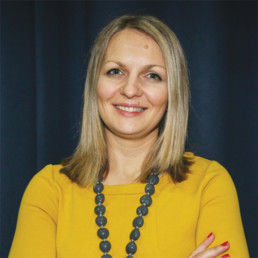
Written by Helena Marsh
Helena is a WomenEd co-founder, mum of three and experienced school and Trust leader. In her ninth year of secondary headship, Helena has also held the role of MAT CEO. An advocate of flexible working, Helena co-wrote the ‘Flexing our Schools’ chapter in the first WomenEd book and has been an active supporter of the Flexible Working Ambassador Scheme and the MTPT Project.
Spending the day among some incredible inspiring women at the ‘Breaking the Mould’ event on 9th March at Milton Road Primary School, Cambridge, was a fabulous way to mark this year’s International Women’s Day.
Hannah asked me to contribute to the event when we met for an after work mocktail in May 2023. At the time, having this little spot of feminist joy to look forward to on the horizon really uplifted me at a particularly bleak moment in my leadership career.
Several months later, I was not disappointed. Featuring amongst a programme of kick-ass women gave me a real sense of personal and professional rejuvenation.
My session, entitled ‘What’s the point of cake if you can’t eat it?’, focused on my experiences, as a mum of three, of gendered perceptions of leadership. In my 15 years as a senior leader, I’ve been conscious of women stepping away from the profession, and their leadership potential, citing selfishness and a pragmatic need to focus on their families, as the reason.
To coin a phrase by Summer Turner, I questioned: ‘Are the boys also worrying about this?’ Do men perceive becoming a dad and maintaining their career as ‘having it all’?
Gender pay gap research reveals that they don’t. The Fatherhood Bonus, in stark contrast to the Motherhood Penalty, rewards men for becoming fathers. While women are stepping down or away to focus on caregiving and accepting the inevitability of this pause/permanent freeze in their professional journey, men are, statistically, enjoying promotion and pay progression when starting a family.
My presentation focused on the factors, institutional, societal and personal, that lead to women feeling as though progressing professionally is not a viable choice once becoming a mum. I concluded that wholesale changes to sector expectations of leaders is necessary. As Jill Berry wisely observes, if having a job and a life isn’t achievable, there’s a problem with the job.
The other inputs to the day complemented this theme. Particularly Niamh Sweeney’s rousing cry to tackle the injustices within the profession that inhibit and preclude. Niamh’s anecdote from her recent trip to the States chimed with many of us in the audience. The audacious goal of winning ‘all the things’ spoke to a refreshing cultural ambition. Meanwhile, many of the other talks highlighted the importance of acknowledging feminine leadership traits and valuing the benefits of diversity in leadership teams.
I left the day reflecting on how often ‘having it all’ is misunderstood for ‘doing it all’. My Mother’s Day stash of gifts that I received the following day from my little ones included various iterations of listing pads. As a fan of organisational stationery, I was chuffed with my haul. However, it did make me recognise how much of my sense of success as a mum and leader is measured through my accomplishment of ‘stuff’. Many women that I have worked with pride themselves on getting all the sh*t done and to an exceptional standard, often at the expense of their personal health and wellbeing.
As I acknowledged in my IWD talk, the weight of the mental load that mums carry, let alone mum leaders carry, is immense. It’s important that having #AllTheThings doesn’t necessitate us doing everything but having our fair share of whatever it is we strive for, whether that’s cake, career development opportunities or childcare responsibilities.
Should schools provide prayer spaces?
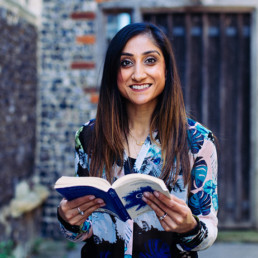
Written by Zahara Chowdhury
Zahara is founder and editor of the blog and podcast, School Should Be, a platform that explores a range of topics helping students, teachers and parents on how to ‘adult well’, together. She is a DEI lead across 2 secondary schools and advises schools on how to create positive and progressive cultures for staff and students. Zahara is a previous Head of English, Associate Senior Leader and Education and Wellbeing Consultant.
The recent High Court decision, ruling in favour of headteacher Birbalsingh’s decision to ban prayer spaces has created quite the media storm. The decision has raised concerns about the precedent it sets for schools creating safe spaces for students and staff, Muslim students and staff in particular. It has also raised conversations about what schools are for and how schools and workplaces can fulfill their obligation to adhere to the Equality Act and The Public Sector Equality Duty – and how they can get around it too.
The responses to the verdict reveal that we live in a society and online world in which Islamophobia and anti-Muslim hate is increasing; whilst we have ‘come a long way’ in overcoming Islamophobia since 9/11, a high court ruling like this makes me wonder if we’ve made any difference at all to the safety of Muslims for future generations? The verdict also reveals the disconnect that exists within the school system itself: we have some leaders who are not interested in creating unity and understanding within a diverse country – yet at the same time they ‘tokenistically’ take pride in multiculturalism too. And, we have other leaders in education giving us hope, embedding inclusive and equitable practices in everyday school life. I find it baffling that a simple question about prayer spaces ends up at the gates of a High Court. To me, this not only reveals a lack of unity and understanding in a school but also an absence of a critical skill that should be at the centre of schooling: listening.
Many educators and commentators have been sharing their concerns and outrage about the decision. It will also concern parents and students who regularly use prayer spaces in schools, maybe even at work (many teachers use prayer spaces too). It’s a disappointing decision and whilst several anti-woke keyboard warriors rejoice at the ruling, we cannot let it set a precedent for schools – and I don’t think it will. Schools absolutely should provide prayer spaces and they will continue to provide such safe spaces for students – it’s quite simply common sense. For this blog, examples and explanations are practical and experiential, based on what life is like ‘in school’. Whilst research and data are important, progress, collaboration and community cohesion are also nurtured by listening to the candid, lived experiences of staff and students in schools.
Time and space to pray
In line with the Equality Act, allowing students and staff to pray is reasonable and proportionate to a school and working day. It is comparable to allowing students to have break times, music lessons and god-forbid, toilet breaks. Different forms of prayer and spiritual practice are a part of nearly every faith. In Islam, praying 5 times a day is an integral part of the faith. It takes 5-10 minutes to pray. For the duration of that time, a prayer mat takes up just as much space as a two-seater desk. Depending on the time of year, prayer usually fits into a lunchtime. Just as schools host extracurricular clubs, music lessons sports fixtures and more, prayer can usually fit into this time too. It is not a big ask and it is not disruptive.
Some schools may have a designated prayer room, which is great. Other schools may allocate a classroom, usually near a space where a teacher is ‘on duty’ anyway; the last time I checked, prayer doesn’t require back flips, cartwheels or balancing on one’s head…the health and safety risks are fairly manageable. Some schools might even say, ‘if you need to pray and you have what you need with you (prayer mat, head covering, beads, holy book etc…), feel free to use a designated safe space. It does not need to be complicated.
Prayer spaces are not the problem
To blame prayer and collective worship for peer pressure and bullying is deflecting from the real problem. If children start praying as a result of seeing others pray, or if they simply observe with questions and curiosity, why is this such a problem? If they find it to be a positive experience, surely that can only be a positive learning experience. If the opposite happens, it’s not necessarily a problem either. Rather, it’s a teachable moment and reveals hostile attitudes any school should be aware of. Knowledge about the prejudices within our communities is the first step to safeguarding young people in education. ‘Cancelling’ or banning prayer spaces is not.
‘Banning’ or ‘cancelling’ (on and offline) doesn’t work. It is a power-based behaviour management tool fuelling a notion that education is based on ‘controlling the masses’. We all learn through conversation, discussion, listening, knowledge, understanding, boundaries and respect, not necessarily in that order. By no means are any of the latter ‘easy’ to achieve, but from working with teenagers I’ve found they’re open to a heated debate, discussion, learning, understanding and compromise.
School is a place of work and I’m not sure why we expect teenagers to just abide by ‘yes and no’ rules with little to no explanation. Plus, if they find a reasonable solution (like praying in a classroom for 10 minutes at lunchtime), what’s the big deal? Secondary school students are a few years away from further education and the workplace, which we all know thrives on innovation, creativity and autonomy. In this case, a blanket prayer ban in a school (their current place of work) completely contradicts the 21st century workplace they will inhabit. It doesn’t make sense.
‘It’s inconvenient: we don’t have time to police prayer spaces’
Like any theory of change, whether that be introducing a mobile phone policy or changes to a uniform policy, navigating any arising teething issues (by students, parents and the community), takes time and flexibility. None of this is impossible if it is built firmly into the school culture, relevant processes and policies. These policies and processes may be safeguarding, anti-bullying, behaviour management and curriculum. All of the above are part of a teacher’s and a school’s day-to-day functions; navigating prayer spaces is no different to introducing a new club or curriculum change. Plus, we somehow managed bubbles and one-way systems post-lockdown…I think schools are pretty well equipped to create a prayer space for all of a matter of minutes in a day!
Prayer is not ‘an add on’
Faith is observed differently, from person to person. It is a way of life, and an ongoing lived experience; for some it is an integral part of their identity and for others it is their identity. Prayer is a major part of several religious practices. Like some people are vegan and vegetarian, prayer is not just a choice and something to switch on and off – it is an intrinsic part of an individual’s life. Some individuals, as far as they possibly can, plan their days, weeks, holidays and more around prayer. Not only is it a religious obligation, it is also a source of wellbeing and peace. In a time where health and wellbeing are paramount in education, denying prayer spaces seems counterintuitive. Enabling some form of space (like we do options on a menu) for individuals to pray is a minimal request and something schools can do with minimal disruption. However, if cracks in the system are revealed and outrage spills online and at the High Court, there are bigger questions and concerns to address.
Schools don’t need to be ‘impossible’ or difficult spaces – and they shouldn’t be made out to be like this either. One high court ruling does not define the state of schooling in the UK. I have too much respect and experience (or maybe good fortune) of working in schools that enable, or at the very least, welcome conversations around inclusion, safety, flexibility and authenticity. None of the latter disrupts mainstream education and a student’s chances of attaining a grade 9. However, many other things do and those are inequitable opportunities, ‘belonging uncertainty’ (Cohen, 2022) and denying the identities of the young people we teach.
Reflecting on Privilege and Pupil Premium
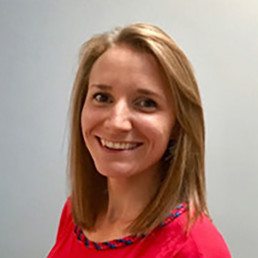
Written by Gemma Hargraves
Gemma Hargraves is a Deputy Headteacher responsible for Safeguarding, Inclusion and Wellbeing.
I recently attended a national Pupil Premium Conference in Birmingham. The first speaker asked for people to raise their hands if they have personally experienced poverty – I have not, so I did not raise my hand. The number of people who did was striking. I was reminded of my experience at Bukky Yusuf’s session at the first Diverse Educators conference when we were asked how many boxes we tick in terms of diversity. I am very aware of my luck, my privilege, and whilst my father would have proudly proclaimed his working class roots he made sure I had a comfortable upbringing never wanted for anything.
Spending the day surrounded by educators who care deeply about supporting students and families eligible for Pupil Premium I was struck by the need to get to know these students at my school better. Since joining the school in September I know some very well, for various reasons, but others I have not met yet. Sean Harris’s keynote was compelling about rewriting the story of disadvantage in schools and communities.
We cannot assume all students in receipt of Pupil Premium funding face the same challenges. When I say “we” I mean myself, as Deputy Headteacher in charge of Pupil Premium strategy, but all teachers and staff in schools. Vital here are Form Tutors who see the students every morning and offer a caring and consistent welcome. Also, Receptionists, canteen staff, all teachers and leaders in schools. “We” here should also mean policy makers – those who decide who qualifies for Pupil Premium, and Service Pupil Premium, and who doesn’t but who also need to be supported (of course this is all students but I am especially thinking of those who are only just above the Pupil Premium qualifying line, disadvantaged sixth formers, of young careers, of others with additional needs). We must all endeavour to know these pupils as individuals and to give them opportunities to shine.
There are practical and logistical challenges of course. Schools Week this week reported that school will have to wait until May to find out their pupil premium funding allocations for 2024-25. The data was supposed to be out in March but had been hit by a ‘problem’ with identifying eligible reception pupils. This clearly makes it more challenging for schools to budget and perhaps recruit but we just not lose sight of the children affected. Similarly, when focusing on outcomes, Progress 8 or some other measure we must remember there are individual students and families behind these numbers.
Of course, our approach must be intersectional. A child is not only “Pupil Premium” they may also be a devout Muslim, disabled, a child of LGBT+ parents or indeed all or none of these but we will only know and be able to celebrate this if we get to know the pupils and families better. We must find funds to support them in ways they need, not what we assume will be generically helpful.
And while literacy is of course important and key to probably every Pupil Premium strategy, and improving educational outcomes can be transformative, we must also focus on cultivating a sense of belonging, confidence and joy. I’ve been doing a lot of work on inclusion, diversity and belonging in schools over the past few years, but this conference gave me a renewed focus on poverty and inequality. In the spirit of pledges from previous WomenEd and DiverseEd events, I am now committing to spend more time reading, thinking, and researching about poverty and inequality in my community but also, of course, getting to know the students and families so they can truly flourish.
Turn Up, Speak Up and Speak Out
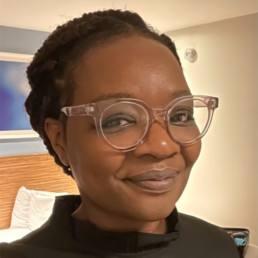
Written by Frances Akinde
Frances Akinde is: a SEND Adviser & Inspector; an AT trainer; an Art Advocate; an Anti-racist schools coach and a ND Champion. She is a former advisory teacher (SEND/SLCN) and Secondary Special Headteacher (Autism). She holds certifications including NPQH, MAEd, NASENco.
During the last weekend of May 2023, I attended the TUC Black Workers conference on behalf of the NAHT (National Association of Head Teachers).
The TUC (Trades Union Congress) is a federation of UK trade unions representing around 5.5 million workers from 48 unions across industries, all committed to collective action. One of the main requirements of affiliation is that-
‘An organisation has a clear commitment to promote equality for all and to eliminate all forms of harassment, prejudice and unfair discrimination, both within its own structures and through all its activities, including its own employment practices.
TUC rules and standing orders | TUC, last updated June 22.
The NAHT joined the TUC in October 2014 under Russell Hobby, who was general secretary at the time. The other education unions that are members of the TUC are the NEU, NASUWT and the NSEAD (a specialist trade union for art, craft & design educators, which I am also a member of), the Scottish union EIS and Welsh union, UCAC amongst others. Out of the four biggest teaching unions, only ASCL is not a member of the TUC.
The TUC holds a number of annual conferences that supplement the general work of the congress. The Black Workers Conference, in particular, focuses on issues and concerns affecting Black workers in the UK. In this context, Black is used as a political term to describe all workers of colour. The conference is used as a platform for Black workers and their trade union representatives to discuss and address issues around racial discrimination, inequality and barriers to employment. It is also a good chance to network and share experiences.
As a member of the NAHT Leaders for Race Equality network, I saw attending the conference as a chance to learn from the TUC’s anti-racist efforts and how this is being applied in the NAHT and other education unions.
In October 2022, The TUC released a report, ‘Going forward: An action plan to build an anti-racist trade union movement’. It states that ‘For our unions to thrive, recruiting Black members and addressing racism at work has to be at the core of our work. This will grow our movement, make it diverse and truly representative of the working class of modern-day Britain.’
From Action plan to build an anti-racism trade union movement | TUC
This Black Workers conference was the first since the action plan was launched. Various motions were presented to build on this commitment, including ones from the NEU and NASUWT.
One of NASUWT’s motions focused on tackling Islamophobia and anti-Muslim hate in all forms within our education system. This is part of their ‘Big Conversation on Racial Justice’ campaign, which was launched in 2021.
NASUWT | Big Conversation on Racial Justice
One of NEU’s motions focused on tackling institutional racism for all workers, building on work already presented in their ‘Anti-racism charter: Framework for developing an anti-racist approach,’ which is based on the testimony of over 1000 Black teachers about the impact of racism in their workplaces.
As well as listening and voting on the motions, I also attended a variety of workshops and talks, which were all very inspiring.
Overall, I enjoyed attending the conference. I left feeling empowered and energised by the activism I witnessed and the powerful discussions that took place. Since attending this conference, I have grown even more determined to turn up, speak up and speak out against racism and other inequalities.
However, despite NAHT being a large union of around 49,000 members, more specifically, over 100 members within the Leaders of Race Equality network, I was the lone delegate. In contrast, there was a large representation from both NASUWT and NEU.
The TUC’s ‘Jobs and recovery monitor – BME Workers 2023’ report, published May 2023, highlights that-
‘BME workers face systemic disadvantage and discrimination in the labour market, whether it be lower employment rates and higher unemployment rates, lower pay, more insecure work, or occupational segregation.’
Jobs and recovery monitor – BME Workers 2023 | TUC
Black leaders in education are not exempt from this, and sadly, many of us have been the victims of both racism and performative allyship. Therefore, it was disappointing not to have more members from NAHT there.
With over 800,000 members represented across our education unions, our unions have the power to use their combined voices to successfully campaign for critical issues such as fairer pay and Ofsted reforms. Education’s next priority needs to be committing to actively working together to eradicate systemic racism in education. Part of that is ensuring that Black leaders in education are actively part of national conversations around tackling inequalities, as our voices are crucial.
Addressing the Legacy of Section 28 & Supporting Diverse Families

Written by Troy Jenkinson
Equality, Diversity & Inclusion Specialist, children’s author, public speaker and former Primary Headteacher and Executive Headteacher. https://troyjenkinson.com/
Today, more than ever, we should strive for equality in our schools. Seeing how LGBTQ+ culture has been embraced in colourful Pride events and the peppering of queer characters in the media, you could be forgiven for thinking we had turned a corner in equality. We have come a long way, triumphing over the Section 28 policy (the 1988 amendment to the UK Educational Bill silencing queer teachers) and the partial decriminalisation of homosexuality. We have fought hard for rights to marry, adopt and live our lives showing our “True Colors” to quote Cyndi Lauper.
Digging deeper, you realise how far we still need to go. The ILGA (2020) reports 70 countries still criminalise homosexuality; 6 punishable by death, 57 with lengthy prison sentences. Only 68 countries offer broad protection for their LGBTQ+ population. High profile media events point to continued educational need. Florida’s “Don’t Say Gay” Bill (March 2022) mirror’s Thatcher’s vindictive 1988 Section 28. We have not learned. Cripplingly unfair acts such as harsh laws to imprison LGBTQ+ people for life in Uganda reported by the BBC in March 2023 marginalise our community.
The UK once topped the ILGA table of European countries for LGBTQ rights (2015), but slumped 14 places by 2022, accredited to governmental failures and its abandonment of its promise on gender recognition and equality plans. The statistics speak for themselves. Galop (2021) reported “LGBT+ hate crime is disproportionately on the rise in the UK.” Two thirds of LGBTQ+ people experienced homophobic violence or abuse. This likelihood only increases for ethnic minority and trans people.
The question we have to ask ourselves is; why?
Bullying is borne from ignorance. Section 28 has long-lasting effects on our educational establishments. Stonewall reports LGBTQ+ students are twice as likely to have been bullied than their non-queer compatriots (42% compared to 21%). Teachers echo this; 85% of secondary and 45% of primary staff acknowledge homophobic bullying in their schools.
With less than half of LGBTQ+ students (48%) experiencing positive messaging to support them, it is high time we as educationalists did something about it. The government introduced Relationships and Sex Education Guidance (2019) but left it open to interpretation stating:
“Schools should ensure that all of their teaching is sensitive and age appropriate in approach and content. At the point at which schools consider it appropriate to teach their pupils about LGBT, they should ensure that this content is fully integrated into their programmes of study for this area of the curriculum rather than delivered as a standalone unit or lesson. Schools are free to determine how they do this, and we expect all pupils to have been taught LGBT content at a timely point as part of this area of the curriculum.” (DfE, 2019)
Robert Long (2023), concludes schools are still not required to “promote” same-sex marriage:
“Governors, teachers and non-teaching staff in schools, parents and pupils, are free to hold their own religious or philosophical beliefs about marriage of same sex couples.” (Long, 2023)
Schools need help to sensitively support all pupils and tackle the endemic victimisation. They need to address inequality and inclusion in their curriculum and how they support diverse families. There is little guidance for parents themselves.
From my own experience of coming out, my parents found it traumatic; relating it to grieving as they tackled a myriad of questions, hyped by media negativity:
- Would I grow up happy and fulfilled?
- Would I be bullied?
- Would I die of a terrible disease?
- Would they have grandchildren?
Though this was in the 2000s, it is still a very real issue for some individuals today.
Recently, I worked with international colleges supporting staff and students from countries with poor human rights for LGBTQ+ citizens. I became fascinated by the term “Straight Privilege.” Those not identifying as LGBTQ+ do not have to come out, or seek out role models in the public eye. It is an interesting concept to explore.
As a headteacher, influenced by Andrew Moffatt, I introduced weekly “No Outsiders Assemblies.” Using news images, I positively identified people who stood up for their rights or succeeded despite potential marginalisation. This ranged from Malorie Blackman’s interpretation of historical figure, Rosa Parks for Doctor Who and Jacinda Ardern’s maternity arrangements as New Zealand’s Prime Minister, to discussing the controversies of a gay kiss at the 2018 Winter Olympics.
Working with a family whose children experienced bullying for having same sex parents, inspired me to publish my first children’s book “The Best Mummy Snails in the Whole Wide World.” Since, I have delivered countless assemblies, workshops and key notes speeches aimed at fighting the corner and being the role-model, I never had in school.
My Allyship Journey - Part 2
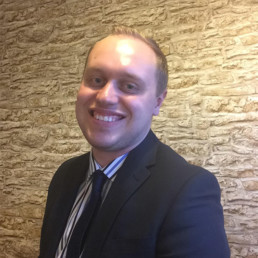
Written by Ben Hobbis
Teacher, Middle Leader and DSL. Founder of EdConnect and StepUpEd Networks.
ally (noun): a person or organisation that actively supports the rights of a minority or marginalised group without being a member of it.
allyship (noun): active support for the rights of a minority or marginalised group without being a member of it.
I’ve been an ally for all my adult life. However, it was only a few years ago I recognised this. Initially I realised I was an ally for women, or a #HeForShe.
The reason for recognising I was an ally for women (or sex equality/equity), was my previous experience. Working as a retail and Human Resources professional, I had been an ally for women. I’d worked with women who had been through pregnancies and were returning to work, women who had gone through a miscarriage, women who were working flexibly. I also worked within female heavy environments often with men who did not understand, empathise or appreciate what was happening around them. Hearing sexist comments and people laughing/ not challenging. I realised I didn’t like it. I realised it was wrong.
Upon joining education, I thought on entering a female heavy profession, surely there’s no gender inequalities here. Oh how wrong I was. I followed #WomenEd, I’d first known about them because one of the co-founders, Keziah Featherstone was one of my teachers. I then read more and more, I read blogs, I bought and read their blog, I attended virtual events and I even spoke at an event as a #HeForShe.
I then followed many of the other grassroots networks: BAMEed, LGBTed, DisabilityEd, Mindful Equity, Diverse Educators and many more. I continued to read, to educate myself, to try and understand the problem, whilst I knew I wasn’t living it myself. After reading, hearing people talk at online events, hearing their stories, often including stories of mistreatment, discrimination and inequity.
I then realised I was not just an ally for gender, but all protected characteristics, I was an inclusive ally.
I’ve learnt more and more about myself and my allyship journey, learning how I can become a better ally. This will be a lifelong journey for me.
Julie Kratz @NextPivotPoint refers to the term ally as an umbrella term. They state there are five key roles to being an ally: the mentor, the sponsor, the advocate, the coach, the challenger. I know I’m an advocate, but am I the mentor, sponsor, coach and challenger? I’m probably not as strong there, so that’s my challenge now, to continue to reflect on and develop my role as an ally in society. Therefore, I’m sharing my allyship goals:
- Challenge the usage of language.
- Coach and Mentor others to become allies.
- Advocate for equity by amplifying DEI through social media, my networks, and my day job.
- Sponsor and nurture diverse talent inside and outside of work.
To achieve this, I know I need to engage more with fellow allies and the networks I engage with, as well as those I am an ally to. Therefore, another goal is to attend an in-person event (or more than one) for a network I am an ally to. This will enable me to further develop and amplify as an ally.
As the world continues to evolve, so does my allyship.
The Intersection of Diversity and Climate Justice
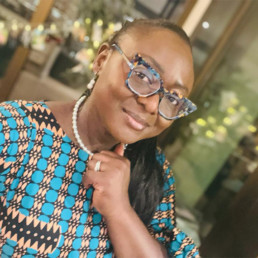
Written by Ndah Mbawa
Ndah runs Happier Every Chapter, a literacy service committed to helping schools and families improve diversity awareness and reading attainment through library diversity audits and the provision of diverse, inclusive and representative bestsellers for children. Her passion for decolonising mindsets within the school-to-workplace pipeline and supercharging the will/skill to read is shared by her teenage daughters, Kirsten & Aiyven.
The issue of climate change affects us all regardless of race, ethnicity, gender, or socioeconomic status. Be that as it may, it is becoming increasingly clear that certain communities are disproportionately more impacted by the effects of climate change, and that these communities often belong to groups who have historically faced discrimination and marginalization. The intersection of diversity and climate justice is one that cannot be ignored. It must be addressed if the hope to build a sustainable and just future for all is to be realised.
Take the uneven distribution of environmental burdens and benefits as a case in point of how diversity intersects with climate justice. Largely, communities of colour and low-income communities are more likely to live near polluting industries and toxic waste sites, and are therefore more likely to suffer from the health impacts of pollution and environmental degradation. If you don’t believe me, this Princeton University article may convince you. When I watched the critically acclaimed Erin Brokovitch in 2000, I didn’t realise the issue was as severe as Black People being 75% more likely to live in fence line communities than White People in the United States. These same communities are also more likely to experience the devastating effects of climate change, such as flooding, heat waves, and droughts. They are therefore facing a double burden: more likely to be exposed to environmental harms, and more vulnerable to the impacts of climate change. Coming back to our shores, according to the Environment Agency, households within 20% of the most socially deprived areas in the UK have a greater likelihood of flood risk than households in less deprived areas. The Grenfell tower fire incident of 2017 revealed a deep division between the rich and poor. Had the cladding which the developers used as a case for climate change to reduce the operational energy/emission costs not been flammable, we wouldn’t be having this conversation. The tragedy of this community which even though located in one of London’s wealthiest boroughs had become the most unequal place in Britain, exposed the underlining gaping social inequalities in our society as well as poorly informed climate change/justice initiatives and weak control over conditions pertaining to the already constantly degrading state of low-cost renting. This Guardian article put it well when it said, “fire is an inequality issue”.
Whether in North America, Europe, Australia or Africa, the recognition of traditional knowledge and indigenous perspectives is waning to dire levels. Indigenous communities who have thrived and lived in harmony with the natural environment for thousands of years have developed sophisticated strategies for adapting to changes in the climate. However, today, these communities are often excluded from decision-making processes around climate justice and have little to no voice in shaping policy. Makes you wonder how much education on climate change reaches communities like this in the first place. Surely the Inuit communities in the Greenland or Quebec who are experiencing melting sea ice making hunting and fishing more dangerous and unpredictable wouldn’t mind contributing to initiatives that may affect the future of their natural environment? Maybe we are missing a trick. Maybe by recognizing and valuing traditional knowledge and indigenous perspectives, we can build more sustainable and resilient systems that are better equipped to address the challenges of climate change in those particular places. For the climate justice movement to be inclusive, equitable and authentic, diversity of the key players is critical. Being a global problem, it requires collective action with engagement of a wide range of stakeholders from all impacted communities whether that be the younger generation, women, global majority people and others who have traditionally been excluded from decision-making processes.
Suffice to say, the intersection of diversity and climate justice is a critical issue that demands our urgent attention and action. The hope of a sustainable and just future for all might be a bit of a struggle to achieve without the due address that this status quo needs. There’s no denying the impact and relentless onslaught of climate change but as a collective we don’t seem ready. Hurricane Katrina in 2005 showed just how much when the low-income communities in New Orleans were disproportionately affected because they lacked the resources to evacuate or rebuild their homes.
While we carry on with efforts to educate our generation, we mustn’t forget the younger generation who will bear the brunt of our actions and decisions. It is also vital to educate them on climate change and how they can limit its advancement. One excellent way to do this is through books. Have a read of our blog post with some amazing book recommendations to teach children all about climate change in celebration of Earth Day.
If you are an educator looking to improve the literacy outcomes of your pupils especially the lowest attaining 20% or you simply want to diversify your school library collection, then speak to us. Happier Every Chapter works with schools, academies across the UK to improve reading attainment and diversity awareness through diversity audits and monthly boxes/bundles of diverse, inclusive and representative bestsellers with different curriculum aligned themes each month.

